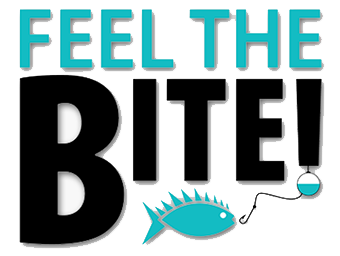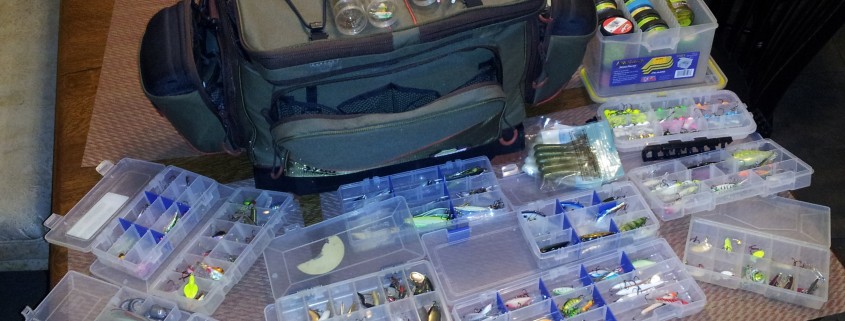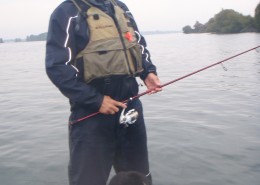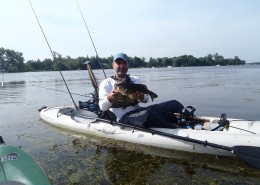Five Steps to Selecting the Right Bait
Over the past ten years fishing has witnessed a revolution brought on by the merger of technological innovation, scientific research and knowledge passed on by generations of fishers. The result has been ever-more innovative baits. Manufacturers are also working closer than ever with their field staff to fine-tune new offerings, and are publishing increasingly detailed usage instructions. For recreational fishers, it’s resulted in a reduction in the use of live bait, and more importantly, fewer slow days on the water. And, when minnows can cost as much as 50 cents each and night crawlers a quarter, switching to artificial makes for sound economics. So what is it that makes a good artificial bait?
Some of the variables manufacturers take into consideration when developing and marketing artificial baits include matching-the-hatch, light levels, time of year, intended species, water temperature, underwater structure, use ability, longevity, cost effectiveness, environmental impact, fishing trends, etc. It may seem like a long list, but when you take the time to think about what the modern fisher considers when deciding how to invest their time and money, it’s just the tip of the iceberg.
Of course there’s always the “if it ain’t broke, don’t fix it” approach to fishing that accounts for many of the tried-and-true baits that can be found in the average fishers tackle box. These most often are reaction-style baits noted for their ability to generate moderate success under a variety of conditions – a sort of “one size fits all” style of lure that we wouldn’t mind being stuck with on a desert island. But, since the chance of being stranded these days is pretty much nil, why are so many tackle boxes filled with ump-teen different versions of the same style baits?
Increasingly, premium bait manufacturers are counting on fishers to possess a certain level of competency when they launch a new bait. These same companies also assume that we will take the time to learn how to properly apply their latest innovations. It’s this spirit of cooperation that is responsible for the sport’s recent and dramatic evolution.
Successful fishers begin the process of selecting which baits will be used during an up-coming fishing trip many Days before lines are actually wetted. It starts with researching the characteristics of the aquatic environment to be fished, takes into consideration the locally preferred tactics and equipment, and then determining what existing and additional new tackle is required. In short, the right bait at the right time under the right conditions. Other than weather, little about fishing as to do with luck.
No doubt, in addition to the brain-numbing variety of baits on the market, making bait selection even more difficult is the insistence of some manufacturers that their baits do it all. To counter this absence of information, deciding on what bait to buy and use comes down to both a fishers direct experience and what they have learned from trusted experts by reading articles or listening to seminars. More-and-more though, bait manufacturers who have made the investment in developing quality baits are now including educational materials on when, where and how to get the most out of their product on the water. The internet has been a game changer in this regard.
Tackle manufacturers are now able to launch new products at the time of their choosing; no longer being tied to a few days each year based on the schedule of an annual outdoor show. They also recognize the value of getting their baits into the hands of trusted experts so these fishers can, in turn, offer-up their opinions and tips through social media.
With so many choices available to fishers it’s understandable why some have grown slightly cynical of the motives of bait manufacturers. Mistakes can happen however, and it’s not uncommon to find baits in bargain bins never intended for fishing conditions within 500 miles of that store’s location. Choosing to buy baits based on first impressions alone might offer one an immediate thrill, but it’s completely reverse to how the process should unfold. The following five steps should help you to maintain control over your tackle purchasing impulses — indulging your compulsive tackle purchasing “wants” should be relegated to an optional sixth step.
- Learn from local experts to identify currently productive fishing techniques and baits specific to the region or body of water you plan to fish.
- Assess recent and potential climactic and other external influences that could impact your chosen body of water.
- Inspect your existing tackle suitable for the fishing scenarios being considered.
- Make a list of essential tackle you will need to acquire.
- Consult with your local tackle stores staff to identify what available stock might best fit your needs.
- Only once steps one-through-five have been implemented should you risk a peek in your local tackle venders clearance bins.
I like to conduct my on-line research about new baits brought to market between seasons. It’s during these slack line moments that I also sort baits according to how each performed under various conditions. I spend just as much time remembering those glory days and the baits I used, as I do thinking how I could have turned around those less productive days. By spending time focusing on the lessons I learned I’m able to identify where I need to expand both my fishing skills and bait collection. In practical terms, it often means investing more time to research and experiment with new-to-me products and tactics designed to address the sort of challenges that have been causing me grief.
Like everyone I enjoy telling stories about the big ones, but just as importantly, I always take time to revisit those unproductive moments with my fishing buddies at the end of each day. By thinking and talking our way through our feelings of disappointment, it becomes possible to learn from our mistakes. Sorting through the subjective emotions that cloud logical thoughts allows for clear objective problem solving, and that’s exactly the mind-set needed when you plan your next tackle purchase.













